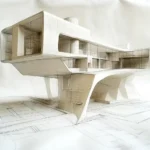Standing tall against the Chicago skyline, Willis Tower is more than just a building; it’s a symbol of resilience and innovation. Originally known as the Sears Tower, this architectural marvel has captivated visitors and locals alike since its completion in 1973. Its sleek design and towering height make it an unmistakable part of the Windy City’s identity.
As we explore the significance of Willis Tower, we’ll dive into its fascinating history, unique features, and the cultural impact it has on Chicago. From breathtaking views to its role in the city’s economy, this iconic structure continues to inspire awe and admiration. Join us as we uncover why Willis Tower remains a cherished landmark and a testament to Chicago’s enduring spirit.
![]()
Willis Tower Overview
Willis Tower, a cornerstone of Chicago’s skyline, stands as a testament to architectural innovation and urban resilience. Its iconic status stems from a rich history and exceptional design.
![]()
Historical Background
Completed in 1973, Willis Tower was initially named the Sears Tower after the retailer Sears, Roebuck and Company. Designed by architect Bruce Graham and structural engineer Fazlur Rahman Khan, the tower symbolized economic growth during the 1970s. The groundbreaking ceremony took place in 1971, with the building rising to a height of 1,450 feet (442 meters). Upon completion, it became the tallest building in the world, a title it retained for nearly 25 years. It underwent rebranding in 2009, becoming the Willis Tower, named after the insurance broker Willis Group Holdings, reflecting changing economic landscapes.
Architectural Significance
Willis Tower showcases a distinctive postmodern design characterized by its bundled tube structure. This innovative design allows for greater height while maintaining stability against wind forces. The tower features 110 floors and incorporates 2.5 million square feet of office space. A renowned observation deck, Skydeck Chicago, offers panoramic views of up to 50 miles across four states. This architectural feat not only changed Chicago’s skyline but also influenced skyscraper designs worldwide, setting benchmarks for future constructions.
Visitor Experience
Visitors to Willis Tower enjoy a spectacular view and an engaging experience that highlights the building’s significance. Several features enhance our time at this iconic site.
![]()
Observation Deck
Skydeck Chicago, located on the 103rd floor, provides breathtaking views of up to 50 miles on clear days, spanning four states: Illinois, Indiana, Wisconsin, and Michigan. The observation deck features The Ledge, glass-walled boxes that extend 4.3 feet outside the building, allowing for a unique perspective on the city below. Interactive exhibits and informative displays enrich our understanding of Chicago’s history and skyline, making this a must-visit location for tourists.
Tours and Events
Guided tours provide an in-depth look at both the architecture and history of Willis Tower, catering to groups and individual visitors alike. Educational programs focus on the engineering marvels and design principles that define the tower. Additionally, the venue hosts events and private functions, allowing guests to experience the stunning views and ambiance in a unique setting. Special holiday decorations and themed events throughout the year attract many visitors, making each visit a fresh experience.
Impact on Chicago’s Skyline
Willis Tower significantly shapes Chicago’s skyline, serving as a distinguishing feature in the city’s architectural landscape. Its towering presence makes it an easily recognizable symbol of Chicago.
![]()
Iconic Status
Willis Tower holds an iconic status, influencing not only local but also global perceptions of Chicago. Designed with a unique postmodern aesthetic, its bundled tube structure set a precedent for future skyscrapers. As a former tallest building, its height—1,450 feet—emphasizes Chicago’s ambition during the late 20th century. The tower’s powerful image has inspired countless photographers and artists, establishing it as a central motif in representations of Chicago.
Comparison with Other Landmarks
Compared to other notable Chicago landmarks, Willis Tower maintains a unique stature. The John Hancock Center, while also iconic, reaches only 1,128 feet, highlighting Willis Tower’s dominance in height. Additionally, structures like the Tribune Tower and the Wrigley Building, both historic in their own right, serve different architectural purposes and styles. Willis Tower’s sleek, modern design contrasts with the decorative Gothic details of the Tribune Tower, showcasing Chicago’s diverse architectural heritage. By establishing itself as the tallest building in Chicago, Willis Tower plays a critical role in defining the city’s skyline, creating a lasting legacy that continues to shape urban development.
Cultural Representation
Willis Tower serves as a prominent cultural symbol for Chicago, reflecting both the city’s heritage and its ambitions. Its striking presence has inspired various forms of media and art, solidifying its status as an icon.
![]()
Media Appearances
Willis Tower frequently appears in films, television shows, and documentaries, reinforcing its place in popular culture. Iconic scenes feature the tower, such as in the films Transformers and Divergent, highlighting its architectural grandeur. Television series like Chicago Fire and Chicago PD often showcase the skyline, with Willis Tower serving as a recognizable backdrop. Additionally, countless news segments use the tower’s silhouette to frame reports, making it synonymous with the city. Through these mediums, the tower transcends its physical form, becoming a visual shorthand for Chicago.
Symbolism in Chicago
Willis Tower symbolizes resilience and innovation, embodying the spirit of Chicago. Its completion during the economic challenges of the 1970s marks a pivotal moment in the city’s history. The tower stands not only as a testament to architectural advancement but also as a beacon of hope and progress for Chicago’s residents. Its height and design reflect the city’s aspirations and determination to rise above adversity. Increasingly, Willis Tower represents a community hub that fosters pride and unity among Chicagoans, reinforcing its symbolic significance in the broader cultural landscape.
Conclusion
Willis Tower remains a vital Chicago icon, representing resilience, innovation, and the city’s architectural prowess. Completed in 1973, this landmark not only transformed the Chicago skyline but also became synonymous with the city’s identity. Its impressive height of 1,450 feet and unique postmodern design have established it as a benchmark for skyscrapers worldwide.
Visitors to Skydeck Chicago experience breathtaking views and interactive exhibits, reinforcing the tower’s role as a cultural and historical hub. The Ledge offers an unforgettable view that showcases both the city and the artistic vision behind Willis Tower. Various events throughout the year further keep the experience fresh and engaging for returning guests.
Culturally, Willis Tower influences perceptions locally and globally, appearing in numerous films and television shows. It embodies the spirit of Chicago, serving as a symbol of hope and unity, especially during challenging times. Overall, Willis Tower stands as a lasting testament to Chicago’s ambitions and its influence on urban architecture.
- architectural attractions Chicago
- Chicago building tours
- Chicago business center
- Chicago iconic buildings
- Chicago innovation architecture
- Chicago landmarks
- Chicago skyline
- Chicago skyscrapers
- Chicago tourism
- Chicago's tallest tower
- downtown Chicago attractions
- elevator experience Willis Tower
- famous Chicago architecture
- history of Willis Tower
- resilient architecture
- Sears Tower
- Skydeck Chicago
- tallest buildings in Chicago
- urban innovation Chicago
- visiting Willis Tower
- Willis Tower
- Willis Tower events
- Willis Tower observation deck
- Willis Tower office space
- Willis Tower renovation
- Windy City attractions














Leave a comment